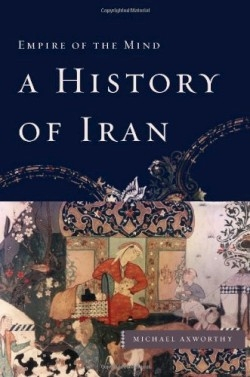A History of Iran
Empire of the Mind
Iran has for several decades projected a dismal image—repression of political and human rights; crippling censorship in the press, literature, the arts, and self-expression; the ideological distortion of education; and the increasing burden of economic hardship. Sadly, this current Iranian reality heavily overshadows the great and glorious civilization that we associate with an older “Persia” (in 1935, Reza Shah decreed the name change to Iran). For most of us, that civilization is shrouded in a golden haze: Persepolis, the Peacock Throne, and Omar Khayyam come to mind, a Cyrus, Darius or Xerxes (perhaps more than one of each) are only just remembered. But help is at hand. In A History of Iran, Michael Axworthy, a lecturer in Arabic and Islamic Studies at the University of Exeter, UK, provides a clear, swift-moving narrative, detailed but not cluttered, that takes the reader briskly down the highway (and more significant byways) of two and a half millennia of Persian history.
Axworthy’s subtitle—An Empire of the Mind—is important. He demonstrates that Persia, and particularly ancient and medieval Persia, was never a rigidly unified or culturally or religiously homogeneous state. Zoroastrianism made Persians acutely aware of good and evil in contention, while the empire of the Achaemenid dynasty (559-330 BC), extending from Bactria to beyond Egypt and uneasily rubbing shoulders with unconquered mainland Greece, introduced the goods and thought of half the world. The author argues that Alexander’s conquest of the empire did not permanently “hellenize” Persia; Persian influences, in fact, were to shape Rome and Byzantium’s imperial conduct. If Rome’s centuries of war with Persia of the home-grown Arsacid dynasty (247 BC-AD 224) intermittently rewarded the West with a larger share trade goods of Asia, it also brought in Mithraism—a religion that was to pervade the empire, including its outposts along Hadrian’s Wall in northern England.
For many readers Axworthy will be tracing less familiar history in his accounts of the Arab, Turk, and Mongol invasions of Persia. Among much else, the Arab conquest (followed by the Sunni-Shia rift and the permanent ascendancy of the latter in Persia) created a crucible out of which unrivaled Persian poetry was born, including Ferdowsi’s magnificent Shahnameh, recalling the glories of pre-Islamic Persia, and that of the ever-popular Omar Khayyam. Islamic Persia was home to al-Kindi and al-Ferabi, translators of Aristotle and Plato, and ibn-Sina and many scholar—authors whose work advanced medieval medicine and science. The horrors of the Mongol conquest did not extinguish creativity: Rumi, Iraqi, Sa’di, and Hafez wrote universally admired works. Axworthy’s analyses of the key elements in the outlook and expression of this diverse quartet will add to our appreciation of their enduring poetry. Given the state of the world, such lines as Hafez’s “Tumult and bloody battle rage in the plain: / Bring blood-red wine, and fill the cup again” are indeed timely.
Few would claim that Persia has enjoyed stability or tranquility; accession to the Peacock throne and dynastic change was often violent and the Shia form of Islam was no stranger to internal dissension, to Sunni threats, or to the intermittent persecution of other faiths. Yet the heterogeneous nation’s wealth, productivity, and trade (Persia straddled the Silk Route) enabled great rulers such as Abbas (1571-1629) to develop and rule a culturally and materially rich state, hence its interest to French, British, and other merchants. Persia’s wealth also served to attract Afghan and Ottoman invaders, particularly in the troubled eighteenth century. Axworthy recounts events con brio, particularly the spectacular career of Nader Shah (1736-41), who won the throne and extensive territories beyond Persia. In the 1790s the civil war/ruthless victor theme replayed under Aga Mohammed—and long continued, though the glory seems to have ended with Shah Reza Pahlevi and the glamour with Farah Diba. The author’s brisk retelling of contemporary Iran’s recent history clearly depicts the Revolution, its belligerent politics, burdensome religiosity, and the nuclear threat. He ends on a cautiously optimistic note: current Iranian films may hint at a more open society.
Particularly telling throughout this fine book is Axworthy’s exploration of the intellectual and religious aspects of Persian life, in which Allah and the perfection of man have long been a concern. We share the passions and the poetry of a great culture that despite war and cruelty never lost its refinement, its concepts of beauty, and of truth. Readers are likely share this reviewer’s sense that a fragmentary knowledge of Persian history suddenly, with the author’s engaging help, approaches a rounded picture—one well worth enlarging. It is hard to imagine a better treatment of Persia within a single volume than this.
Reviewed by
Peter Skinner
Disclosure: This article is not an endorsement, but a review. The publisher of this book provided free copies of the book to have their book reviewed by a professional reviewer. No fee was paid by the publisher for this review. Foreword Reviews only recommends books that we love. Foreword Magazine, Inc. is disclosing this in accordance with the Federal Trade Commission’s 16 CFR, Part 255.

